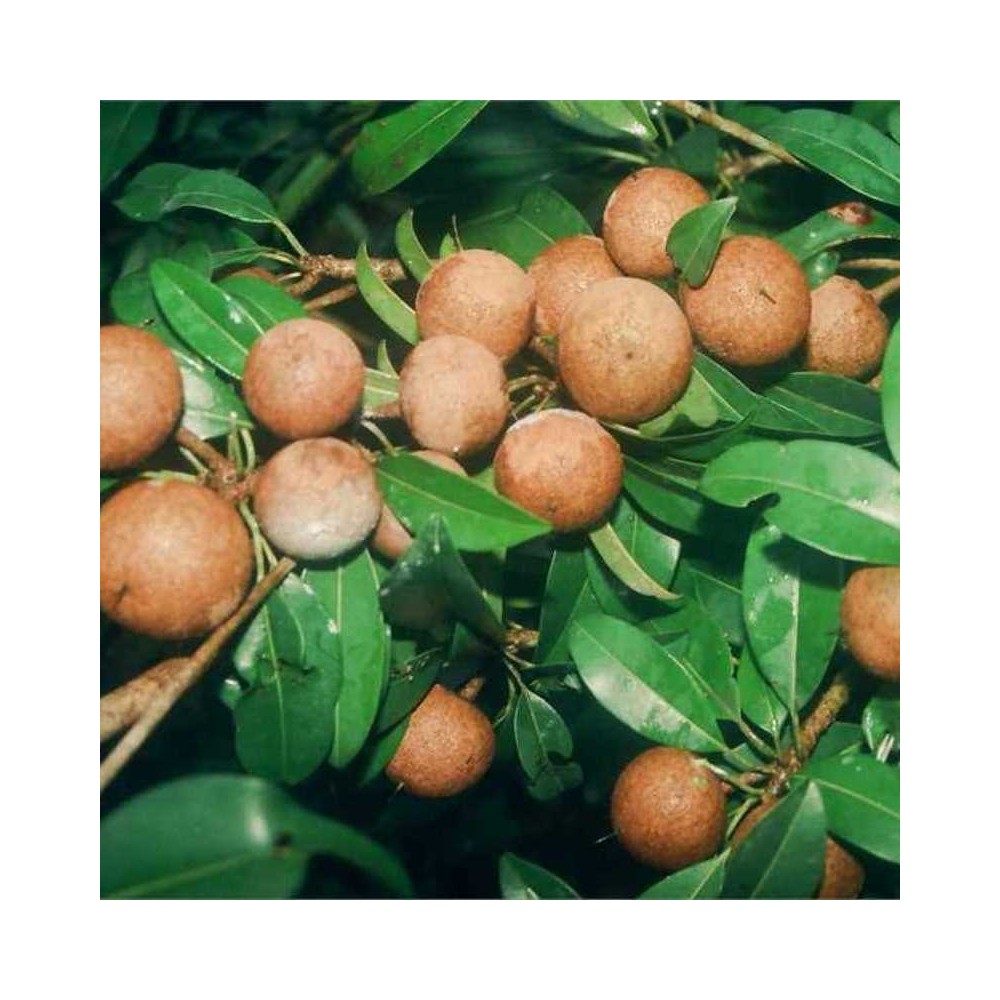



Chikoo This tropical evergreen tree, native to Belize, the Yucatan and Guatemala, is grown in many tropical countries for export. Prized for its sticky latex sap -- chicle -- that was once the main ingredient in chewing gum, the fruit it produces can reach 2 pounds and be eaten raw, scooped out of the hard, brown shell with a spoon when ripe. In its native setting, sapodilla can reach 100 feet; in California and Florida, it is much smaller -- 12 feet -- and will do well in these home gardens with some basic planting care.

Security policy visit http://nurserynature.com/content/10-security-policy

Shipping & Delivery Policy visit http://nurserynature.com/content/1-delivery

Cancellation & Refund Policy visit http://nurserynature.com/content/6-aeu-legal-revocation-terms
Chikoo This tropical evergreen tree, native to Belize, the Yucatan and Guatemala, is grown in many tropical countries for export. Prized for its sticky latex sap -- chicle -- that was once the main ingredient in chewing gum, the fruit it produces can reach 2 pounds and be eaten raw, scooped out of the hard, brown shell with a spoon when ripe. In its native setting, sapodilla can reach 100 feet; in California and Florida, it is much smaller -- 12 feet -- and will do well in these home gardens with some basic planting care.
Chikoo Planting & Care
Purchase a young, established sapodilla tree from a reputable nursery. Choose a healthy specimen that is disease- and insect-free, appears strong and healthy, and has one central trunk. The plant should not be root bound; if roots are poking out of the drainage holes in the container, it has been in the container too long.
Dig a hole three times as deep as the sopadilla's container, and at least three times as wide as the root-ball. Loosening up the surrounding soil will allow the young tree to expand its roots easily. Choose a spot in full sun -- six to eight hours -- and 25 feet away from other trees. Loosen up the dirt at the bottom of the hole with a hoe or claw tool prior to placing the tree in it.
Place the sapodilla tree upright in the hole, holding it in place firmly as you spread soil around the tree roots. Push down on the dirt slightly to remove any air pockets as the hole is filled in. Continue until the root-ball is completely covered, taking care to keep the tree straight as the roots are buried.
Place a light layer of compost over the top of the dirt, pulling it several inches away from the trunk of the sapodilla tree. This will act as both a fertilizer and mulch of the young tree.
Water the tree thoroughly with the hose. Apply water to the soil and roots, and not the trunk or leaves of the tree. Water deeply to saturate the ground without leaving a puddle for the roots to soak in, which can cause root rot. Water every other day for the two weeks; then scale back to one or two waterings weekly for the next two to three months. Trees less than 3 years old should be watered weekly in dry periods.
Stake the tree with a natural fiber -- such as cotton rope -- and a bamboo or wooden stake to encourage straight growth. The natural fiber rope will eventually deteriorate, preventing it from growing into the tree as the sapodilla increases in size.
Add compost or a 6-6-6-2 fertilizer (6 percent nitrogen, 6 percent phosphate, 6 percent potash and 2 percent magnesium) every six to eight weeks, following the manufacturer's directions for application, for the first year to help the young tree establish.
plant
really hybrid